Introduction
Food safety is a priority issue for the European Union EU. The Concern for the health of the consumer and the possibility of critical events on agro-food chain (pathogenic microorganisms, contaminants in food, frauds / adulteration) have led the European officials to develop a system of strict legislation; one of the most restrictive in the world and to apply action mechanisms to prevent the entry of improper food / feed on the EU market.
Materials and Methods
Research has used the information provided by statistical databases of the National Institute of Statistics (NIS), National Sanitary Veterinary and Food Safety Authority, European Commission (Eurostat, RASFF Portal), and FAO (FAOSTAT). The data collected were systematized, correlated with scientific sources, and represented graphically or tabular. The results obtained have been analyzed and interpreted.
The functionality of the EU RASFF
The Rapid Alert System for Food and Feed (RASFF) is an EU tool used for the efficient and rapid use of information related to food and feed safety in the event of threats to consumer safety. Dissemination of information is made between the European Commission, national authorities for food and feed control in the Member States and various European and international organizations. The system is used based on an agreement between EC members of 1979 (RAPEX), the legal basis was established by EU regulations 92/59 / EEC, 2001/95 / EC-RAPEX and 178/2002 / EC. Starting with 2002, RAPEX system was replaced with RASFF (EC, 2015). RASFF network includes National Food Safety Authorities from Member States, the European Commission, EFSA, ESA, Norway, Liechtenstein, Iceland and Switzerland. Together with Romania’s EU integration, the National Sanitary Veterinary and Food Safety Authority (NSVFSA) has become a member of RASFF.
The European Commission and RASFF work out with the World Health Organization (WHO) and developed the international warning system ‘International Food Safety Authorities Network’ (INFOSAN), (WHO and FAO, 2013). The applied procedures are standardized (RASFF SOPs).
The criteria for RASFF notifications are set out in article 50 of Regulation (EC) N ° 178/2002. At the emergence of a potential danger, the competent authorities of the RASFF Member State shall notify the European Commission, through a standardized form, which includes elements of product identification, potential risks, measures taken and information regarding the traceability of the product. The notification shall be accompanied by an explanation of the reasons that led to the action, followed in due course by additional information (EC, 2013).
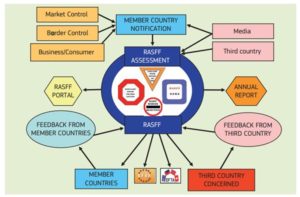
Figure 1: Schematic representation of the information flow of the RASFF
Source EC, (2015a)
The notifications are about biological hazards (microbiological and parasitological), chemical, organoleptic changes, labelling deficiencies, counterfeiting of the products, packaging (inappropriate or which may cause contamination of the products), radioactive radiation above allowed levels or other hazards than those mentioned above. The network uses four types of notifications graphically coded, as shown in Figure 2.
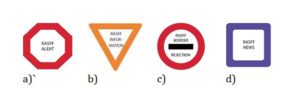
Figure 2: Four types of RASFF notifications
Source CE (2015b)
According to EC (2015b), the meaning of the notifications used by RASFF is the following:
Alert Notification (a) requires rapid action being transmitted at the detection on the market of products presenting a serious risk to public health:
- unsatisfactory products, which may have significant negative consequences on consumer health or may cause death;
- products with potential temporary negative consequences on health;
- the possibility that food can be dangerous when consumed by vulnerable consumer groups (children, pregnant women, the elderly);
- the possibility of a risk of cross contamination with other foods during storage and marketing.
The network member who triggers the alert must apply the necessary measures for reducing the risk (withdrawal/recall of product from the market). The products subjected to an alert have been withdrawn or are in the process of being withdrawn from the market. The purpose of notification is to provide information to RASFF members in order to identify the product in question and to take necessary actions. In some cases, they resort to the media to inform consumers and facilitate the disposal of products from the market.
Information Notification (b) does not require rapid action. Usually, information is transmitted on potential risks, the product has not arrived/is no longer on the market and the measures taken have been effective.
Rejection at the border (c) notifies the rejection of batches of food and feed tested and rejected at the border due to the detection of a health risk for the user. Notifications are sent to all border posts in order to strengthen controls and that the rejected product does not re-enter the EU through another border post.
News (d) are notifications regarding information of common interest regarding the safety of food / feed that has not been communicated as an alert or information notification, but which are important for network members. They can be made based on information gathered in the media or transmitted by competent authorities of third countries.
Notifications can be” original notification” if they relate to batches of foods / feed that have not been previously notified or ‘follow-up notification’, following an original notification sent. Failure to comply with the legal criteria for notification or insufficient information and notification may be rejected by the RASFF, and the notifying country is invited to provide further information. At the request of the notifying country, the information may be withdrawn if the information is ungrounded or is wrongly transmitted (EC, 2015a)
RASFF notifications concerning Romania
In Romania, RASFF activity is governed mainly by the Law 150/2004 regarding food safety, Art. 22, Government Decision no. 308/2004 on the organization and functioning of the National Sanitary Veterinary and Food Safety Authority NSVFSA, and the Order MARD 68/2005 to approve the Rule regarding the Rapid Alert System for Food and Feed, correlated with European regulations (NSVFSA, 2009).
Since the establishment of the network, products from Romania have been registered 203 notifications, with a maximum annual record of 29 complaints in 2013 (figure 3). Foods were most often involved (136), followed by feed (59) and packaging in contact with food FCM (8). (EC, 2018).
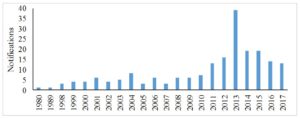
Figure 3: Notifications regarding Romanian products
Source Author, by using EC (2018)
In terms of countries that have sent notifications regarding the most numerous Romanian products come from Italy (27), followed by Germany (25) and Greece (8). Moldova, Slovenia, Bulgaria and Cyprus have submitted only one notification during the analyzed period. In six cases, Romania has notified itself through the RASFF for unsatisfactory marketed products.
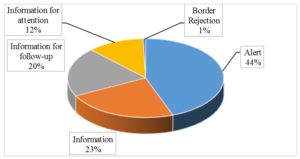
Figure 4: Notifications by type
Source: Author, by using CE, (2018c)
The analysis of notices regarding Romania on the basis of gravity criterion highlights information (121), followed by alert (90). The only lot rejected at the border was notified by Moldova (04.11.2008- salted crisps lot having the best before date exceeded) (Figure 4). An analysis of RASFF notifications for Romanian products in period 1990-2018 (6 months) by category of goods and hazard is presented in Table 1.
Table 1: Notifications for Romanian products by products and hazard (Source CE, 2018)
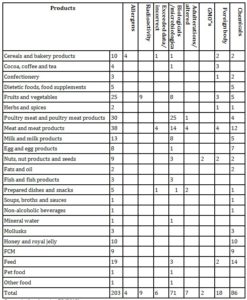
Source Author, by using EC (2018)
The data presented in Table 1 allow the identification of the most common deficiencies noted in Romania for food products, feed or food contact materials (FCM) on the EU market. It thus observed a preponderance of the chemical dangers, including sulphite (86) and those of biological nature, especially contamination with dangerous microorganisms (71). The main causes of these deficiencies can be stated as follows; noncompliance with production recipes, inadequate specifications regarding the quality of raw materials and the existence of poor hygiene conditions in the production facilities. The scandal of substituting beef with horse meat has affected not only the meat products, but also the prepared dishes and snacks category, as notifications from Belgium referred to these products, also during the crisis. The presence of products contaminated with GMO at the nuts, nut products and seeds, is the novelty for hazards associated with local limitations. Feed presents mainly chemical (due to identification of pollutants mycotoxins) and foreign body hazards. Packaging materials (FCM) led to the notification of chemical hazards, due to the migration of components in the product structure.
As an EU member, Romania participated in RASFF activities through NASFVA and transmitted to the network 193 notifications for products distributed on national territory (Figure 5).
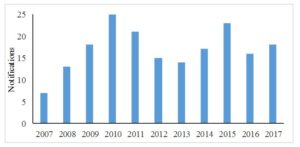
Figure 5: Notifications made by Romania
Source Author, by using CE, (2018)
The number of notifications varies between 7 and 25/year, the maximum record was registered in 2010. In the first 8 months of 2018, 6 lots of food product were notified, for chemicals (1) and microbiological (5) risk. Figure 6 presents RASFF notifications by country of origin of the products made by Romania. With 44 notifications (23% of total), China ranks first position in the top of notifications, followed by Turkey (16) and Poland (14).
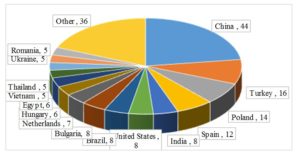
Figure 6: Country of origin products notified by Romania
According to the RASFF (2018), in 2017, 3749 notifications were transmitted through the RASFF with distribution by category as shown in Figure 7. The data presented graphically shows a predominance of border rejection and alerts for non-compliant products, together totaling over 77% of the total. Original information has led to the 583 follow-up notifications, completed by 678 information for attention submitted to members.
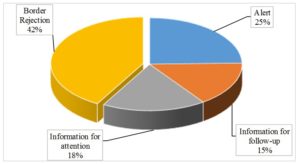
Figure 7: RASFF notifications (2017)
Source Author, by using CE, (2018)
A relevant analysis of RASFF notifications by country required a correlation between notifications and imports. A distribution of food and drink exports at the EU level (SITC06) is shown in table 2.
Table 2: Notifications /100 million import, by country
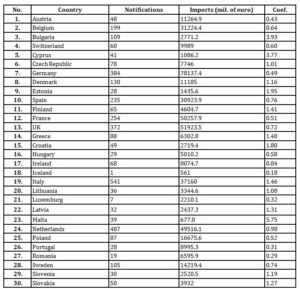
Source Authors, own calculation
Malta (5.75), Bulgaria (3.73) and Cyprus (3.77) are the countries that have recorded the highest values of the coefficients; the last positions are occupied by Portugal (0.31), Romania (0.29), and Iceland (0.18).
Conclusions
Romania does not perform in evaluating the quality of imported products. Romanian imports are made especially in the Eurozone, as well as from Bulgaria or Hungary. The Romanian market is unlikely to be the destination of the best imported food, although our neighbors have lower quality products. The difference is even more apparent if a comparison is performed with advanced western countries. It is very likely that the Romanian system for assessing the quality of imported products will be deficient, allowing for easy access to the domestic market.
Acknowledgements
This paper was co-financed from the European Social Fund through Sectorial Operational Programme Human Resources Development 2007-2013, project POSDRU number /159/1.5/S/138907 “Excellence in scientific interdisciplinary research, doctoral and postdoctoral school, in the economic, social and medical fields-EXCELIS”, coordinator The Bucharest University of Economic Studies.
(adsbygoogle = window.adsbygoogle || []).push({});
References
- European Commission, (2013), RASFF SOPs version 1.3, RASF Portal [Online], [Retrieved March 15, 2015], europa.eu/dgs/health_foodsafety/dgs_consultations/docs/ag/sum_2014 040483en.pdf;
- European Commission, (2018), Annual Reports 2002-2014, RASFF – Food and Feed Safety Alerts, [Online], [Retrieved March 01, 2015], http://ec.europa.eu/food/safety/rasff/reports_ publications/index.en.htm;
- European Commission, (2015), RASFF Leaflet, Health and Food Safety, Other RASFF publications [Online], [Retrieved March 10, 2015], http://ec.europa.eu/food/safety/rasff/reports publications /index_en.htm;
- European Commission, (2018), RASFF Notifications list, RASFF Portal [Online], [Retrieved July 31, 2018], https://webgate.ec.europa.eu/rasff-window/portal/?event=searchResultList&StartRow=101.
- European Comission, (2015), Intra and Extra-EU trade by Member State and by product group, Eurostat Database, [Online], [Retrieved March 20, 2015], http://appsso.eurostat.ec. europa.eu/nui/submitViewTableAction.do ;
- Ilie, I, (2013), What food scandals have affected our image in 2013, Capital, [Online], [Retrieved April 01, 2015] http://www.capital.ro/ce-scandaluri-alimentare-ne-au-afectat-imaginea-in-2013-industria-contribuie-cu-8-la-pib-ul-roma.html;
- National Sanitary Veterinary and Food Safety Authority, (2005), Order 68/2005, Rapid Alert System for Food and Feed, NSVFSA Portal [Online], [Retrieved February 05, 2015] http://www.ansvsa.ro/?pag=902;
- National Sanitary Veterinary and Food Safety Authority, (2008), Strategic Plan 2009, NSVFSA Portal [Online], [Retrieved February 15, 2015] http://www.ansvsa.ro/?pag=902;
- WHO and FAO, (2013), INFOSAN Activity Report, International Food Safety Authorities Network, E-ISBN 978-92-5-107749-8, [Online], [Retrieved April 08, 2015] http://www. fao.org /fileadmin/user_upload/agns/pdf/Infosan/INFOSAN_Activity_Report_2011-2012-Final.pdf,;
- FAO, (2015), Trade Statistics, FAOSTAT, [Online], [Retrieved April 03, 2015] http://faostat3.fao.org/ browse/T/*/E;











